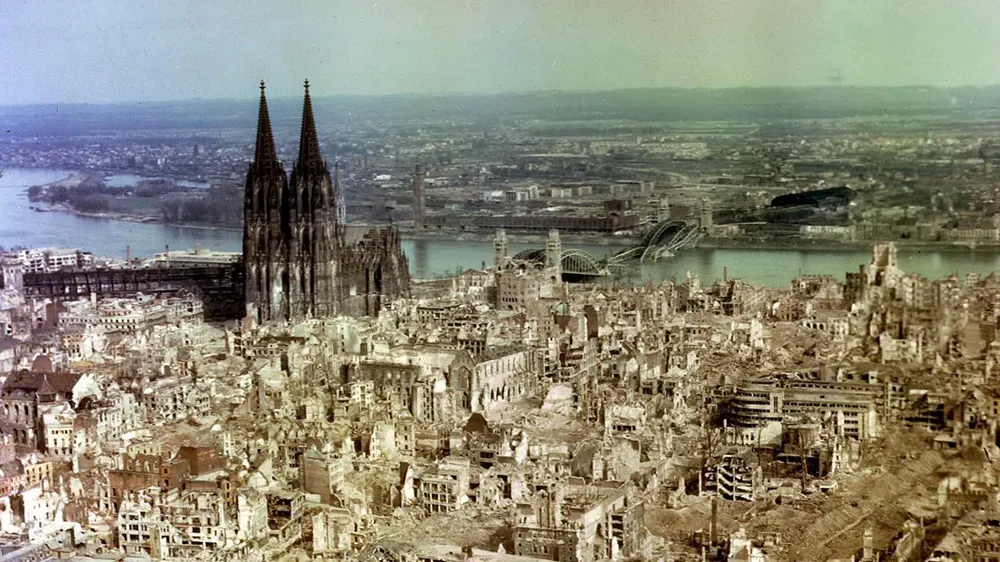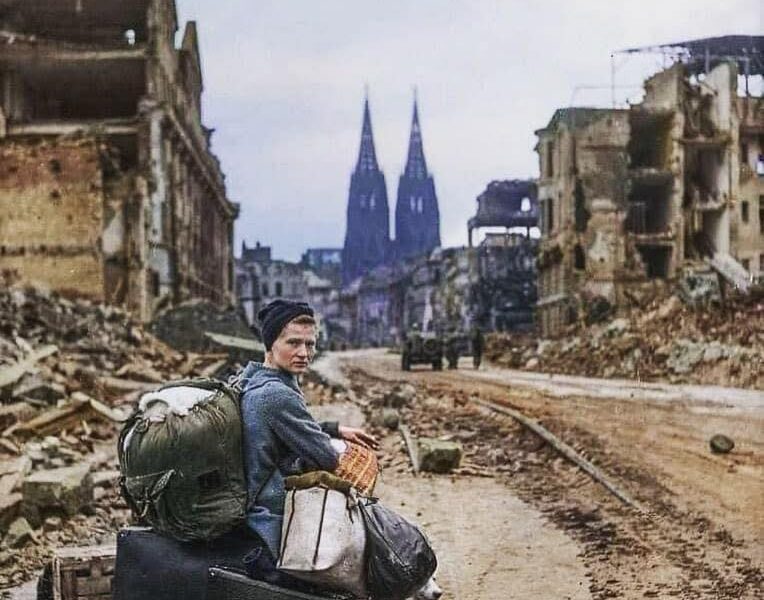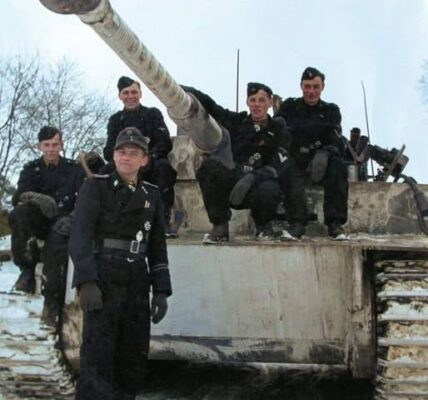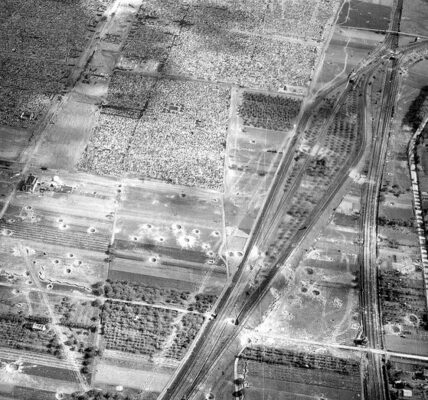Cologne Cathedral towers high above the ruins of the city after the Allied bombing raids in 1944 _s2de

This is a black-and-white aerial photograph of the famous Cologne Cathedral from World War II. Hit by aerial bombs fourteen times during the war, the cathedral did not collapse, but towered high above an otherwise razed city.
The twin towers are said to have served as easily recognizable navigation markers for Allied aircraft penetrating deeper into Germany in the later years of the war. This may be one reason why the cathedral was not destroyed.
The attacking pilots used the cathedral as a marker for their location, but in the final days, when the Allies had complete air superiority, this was probably not so important. Many military personnel wanted to pay respect to the buildings because of their cultural significance.
Bombers at lower altitudes hit their targets more accurately, but bombers at higher altitudes were notoriously inaccurate. Pilots were lucky if even a fraction of their bombs landed over their intended targets. Targeting a cathedral, even one of that size, was simply very difficult with the technology of the time.
.jpg)
The city of Cologne was completely bombed.
After the war, repairs to the building were completed in 1956. In the base of the northwest tower, an emergency repair made in 1944 using inferior bricks from a nearby war ruin remained visible as a reminder of the war until 2005, when it was decided to reconstruct this section in its original appearance.
Construction of Cologne Cathedral began in 1248 and was interrupted in 1473, leaving it unfinished. Work resumed in the 19th century and completed in 1880 according to the original plan.
It is 144.5 m long, 86.5 m wide, and its towers are approximately 157 m high. The cathedral is the largest Gothic church in Northern Europe.
.jpg)
Allied bombers over Cologne, 1944.
In early 1942, the RAF Bomber Command under Sir Arthur Harris began to intensify the growing Allied strategic air offensive against Germany.
These attacks were directed against factories, railway depots, shipyards, bridges, and dams, as well as against the cities and towns themselves. Their goal was to destroy the German armaments industry and deprive the civilian population of their homes, thus weakening their willingness to continue the war.
The characteristic feature of the new program was the emphasis on area bombing, with city centers being the target of nighttime attacks.
During the night of May 30-31, over 1,000 bombers were sent to Cologne, where they caused severe damage to one-third of the city’s built-up area.
In total, the German city of Cologne was bombed in 262 individual Allied air raids during World War II, all by the Royal Air Force (RAF).
In total, the RAF dropped 34,711 tons of bombs on the city. During the war, 20,000 people died in Cologne as a result of air raids.
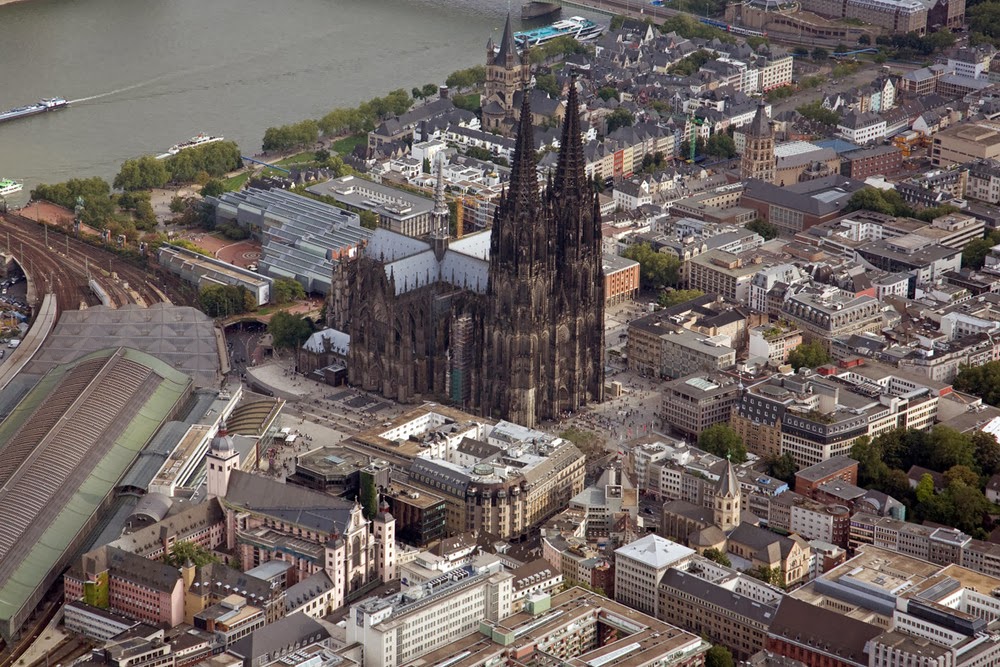
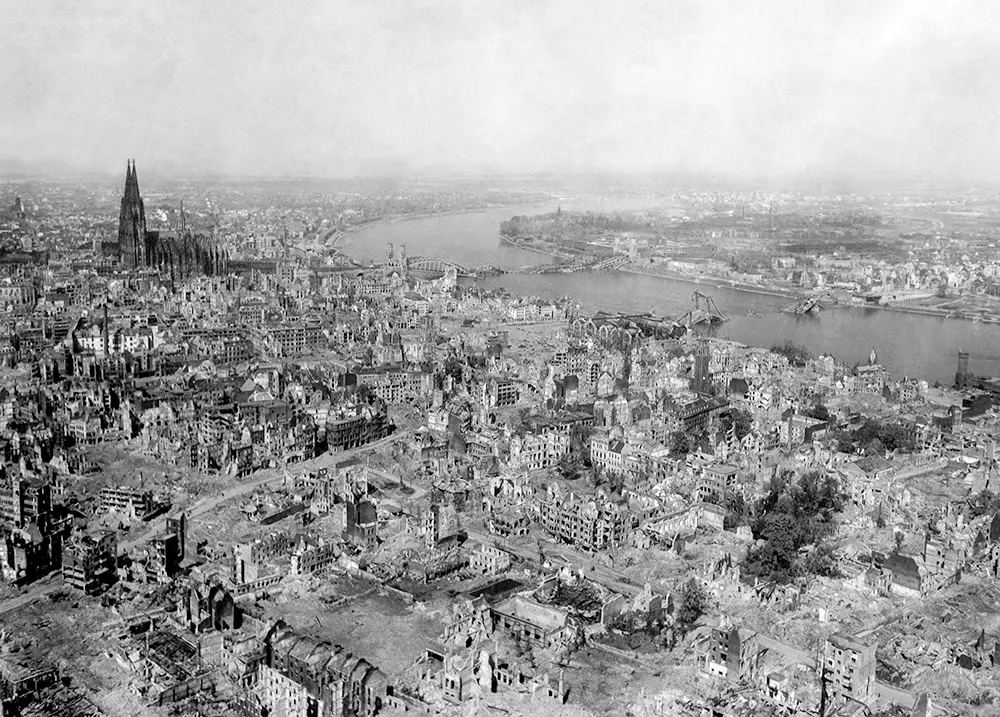
This destroyed Cologne in 1945.
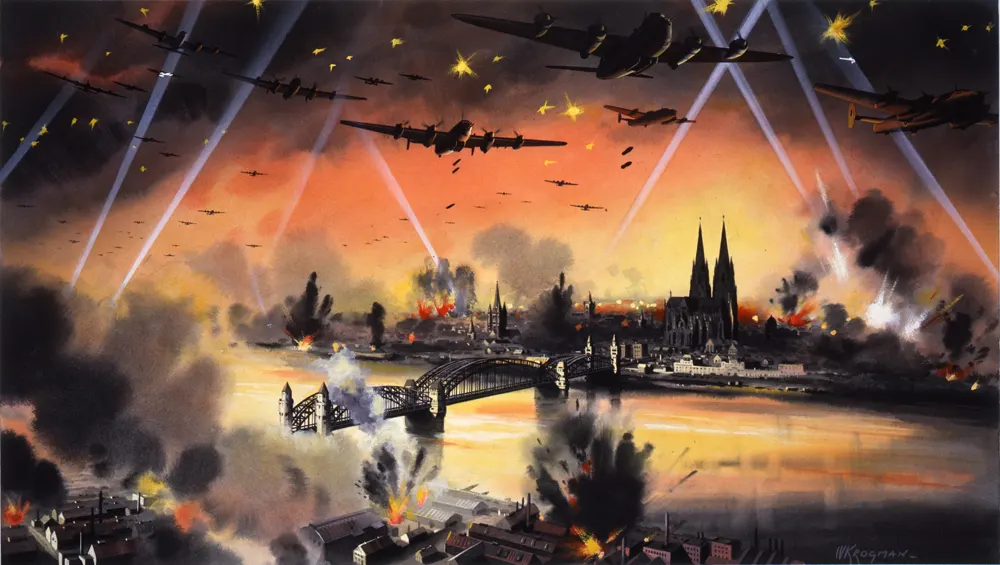
Official British war art depicting a bombing raid on Cologne. Cologne Cathedral is clearly visible. It survived the war despite being hit dozens of times by Allied bombs.

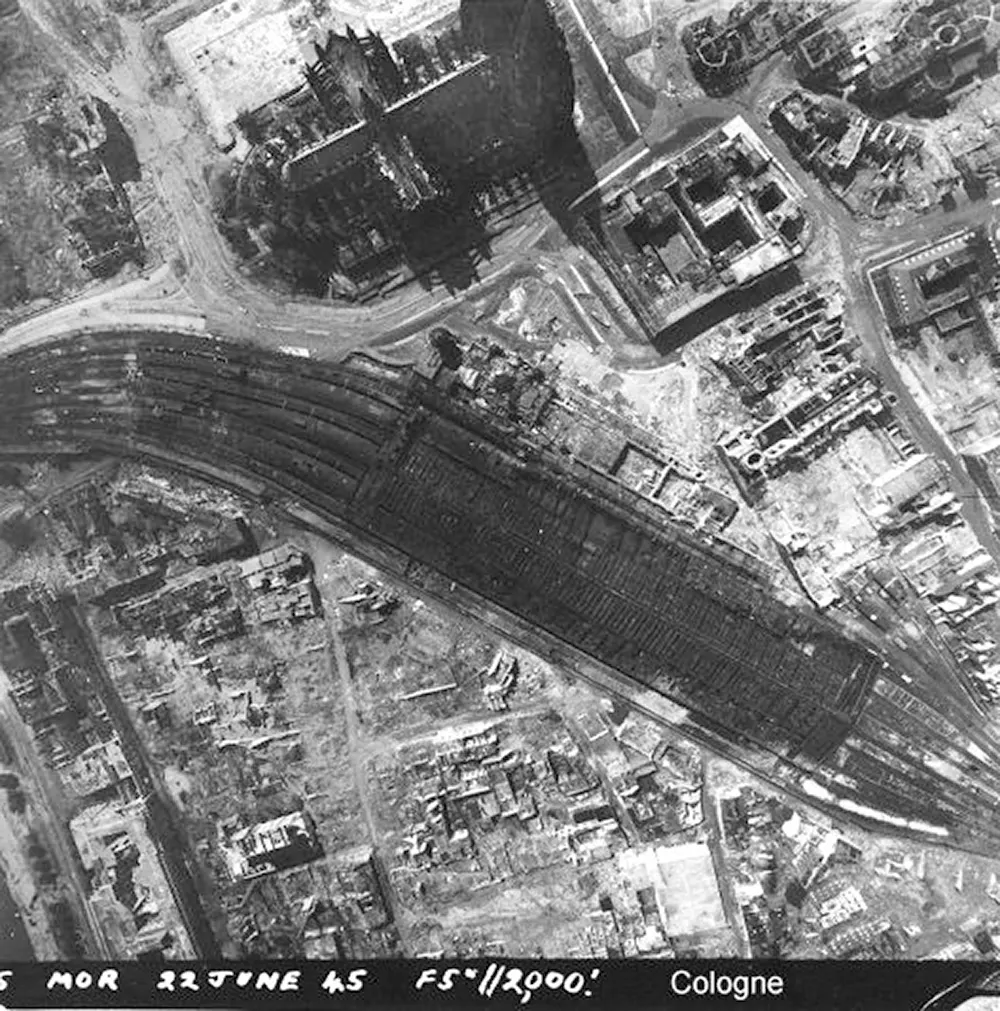
Cathedral and main train station.

A photo showing the damage to the cathedral.

Picture of the cathedral. Note the bomber’s shadow.



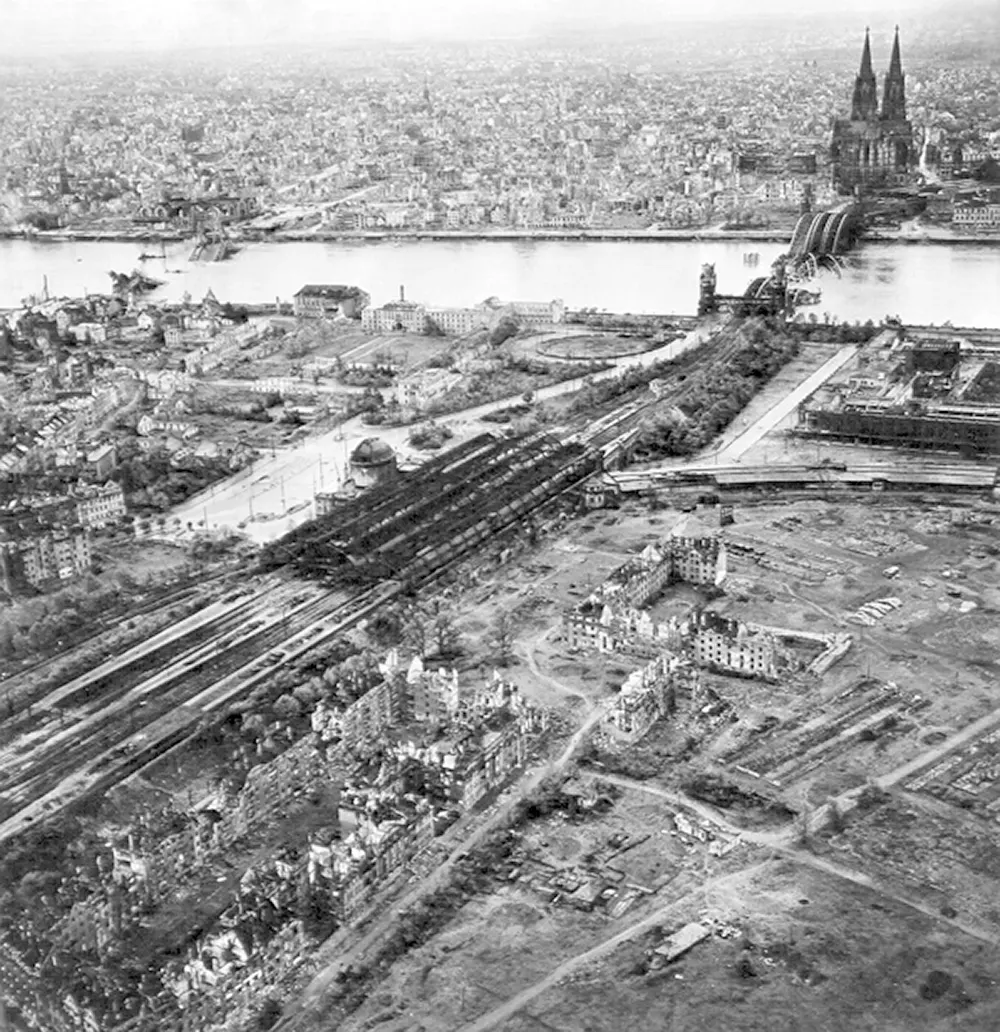

American soldiers in Cologne Cathedral, 1945.

On March 6 and 7, 1945, Allied troops captured the western part of Cologne. The German army still held the eastern bank of the Rhine and attacked the Allies with artillery. The rest of Cologne was captured between April 12 and 15, 1945. By April 16, a strip of approximately 500 meters along the Rhine bank had been declared a restricted area, and the cathedral was located directly within this zone.

